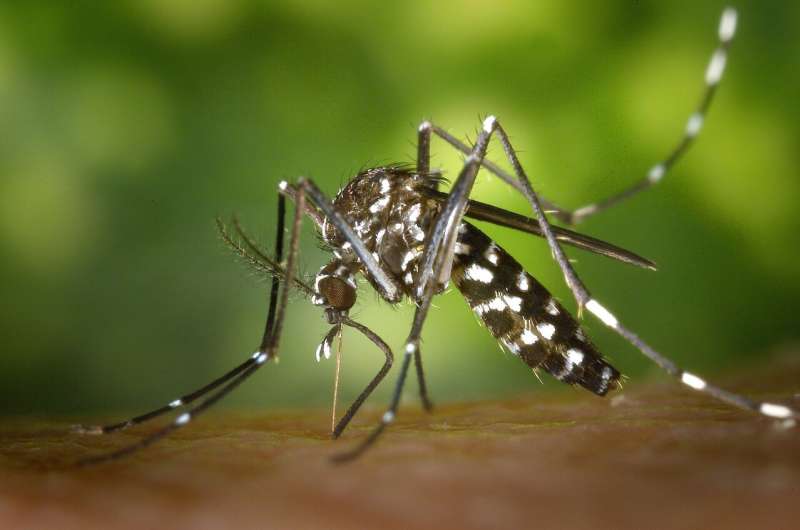A protein essential for chikungunya virus replication identified

Originally from Africa, chikungunya is aptly named. It derives from a word in the Kimakonde language meaning "to become contorted," because the severe muscle and joint pains endured by the patients prevent them from moving normally or performing their daily activities.
While the clinical manifestations of the disease are well understood, the mechanisms by which the virus infects human cells and multiplies remain poorly elucidated. Several studies have already identified certain host cell factors implicated in the replication of the virus. However, none has succeeded in explaining why the virus preferentially targets the muscle and joint cells, causing these clinical signs.
Researchers from Inserm, CNRS and Université de Paris led by Dr. Ali Amara at the AP-HP Saint-Louis Hospital Research Institute in Paris, in collaboration with Marc Lecuit's team from Institut Pasteur, Inserm and Université de Paris now report that the FHL1 protein is a key cellular factor for the replication and pathogenesis of chikungunya. FHL1 is a molecule present mainly in the muscle cells and fibroblasts, the preferred targets of the virus. Usually, FHL1 contributes to healthy muscle physiology and it is now thought to be diverted from that function by the virus to ensure its replication in the target cells.
To conduct this study, Amara's team used the CRISPR-Cas9 technology to screen the genome of human cells in order to identify the host factors necessary for viral replication. In doing so, it isolated the gene coding for the FHL1 protein. The team then conducted a series of experiments showing the incapacity of the virus to infect cells whose FHL1 expression had been abolished.
In addition, the researchers have shown that the virus was incapable of multiplying within cells derived from patients suffering Emery-Dreifuss muscular dystrophy—a rare genetic disease. This muscle disease is the result of mutations of the FHL1 gene responsible for the breakdown of the FHL1 protein. The researchers have shown that the cells of these patients are resistant to the virus.
Finally, the researchers performed in vivo experiments in mice whose Fhl1 gene was invalidated. They have shown that these animals are totally resistant to infection and do not develop the disease, whereas the virus multiplies and causes major muscle lesions in mice expressing a functional FHL1 protein. These observations demonstrate that the FHL1 protein plays a key role in chikungunya virus replication and pathogenesis.
The precise role played by FHL1 in the viral infection is not fully understood. The researchers have discovered that FHL1 interacts with a viral protein known as nsP3. It is when binding to this that FHL1 participates in the replication of the virus.
"We now want to understand this interaction in molecular detail. The next step is to define why FHL1 is so specific to the chikungunya virus, and to decipher its mechanism of action at the molecular level. Elucidating the molecular structure of the FHL1-nsP3 complex could represent a major step forward in the development of antivirals that block the replication of the virus," say Ali Amara and Laurent Meertens, the Inserm researchers in charge of the study.
At present, only symptomatic treatments are available for patients infected with chikungunya.
The study is published in Nature.
More information: FHL1 is a major host factor for chikungunya virus infection, Nature (2019). DOI: 10.1038/s41586-019-1578-4 , nature.com/articles/s41586-019-1578-4



















